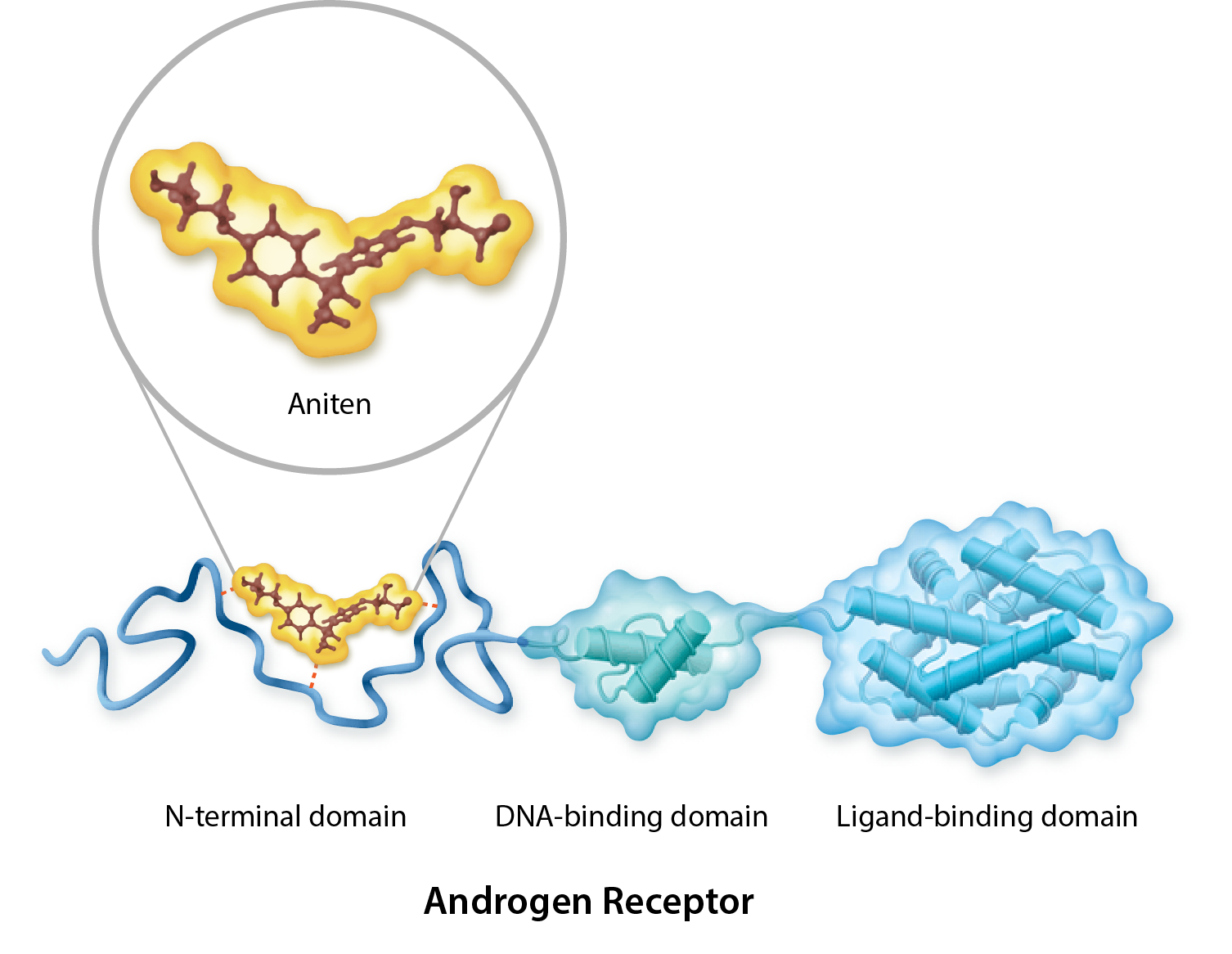By directly inhibiting the AR N-terminal domain, ESSA’s aniten compounds have the potential to overcome resistance to currently used anti-androgens.
Androgens such as testosterone and dihydrotestosterone (DHT) are steroid hormones that are required for key physiological events in male biology. In addition to their roles in normal physiological processes, androgens are also key players in the initiation, development and growth of prostate cancer (PCa), which is the most commonly diagnosed cancer and the second leading cause of cancer death among European and American males. Although initial androgen deprivation and subsequent anti-androgen therapy can result in control of prostate cancer, resistance to these approaches inevitably develops.

The Benefit of Aniten Compounds
By bypassing resistance mechanisms to current anti-androgen hormonal treatment of prostate cancer, ESSA’s anitens offer potential new first approaches to the treatment of prostate cancer. The aniten will be developed initially in the treatment of men whose tumors are progressing despite current antiandrogen therapy. In research studies ESSA scientists and their collaborators in university and industry laboratories are exploring the potential value of ESSA’s anitens in combination with anti-androgen therapy.

We plan to initiate clinical studies of EPI-7386 in patients with advanced prostate cancer in the first half of 2020.